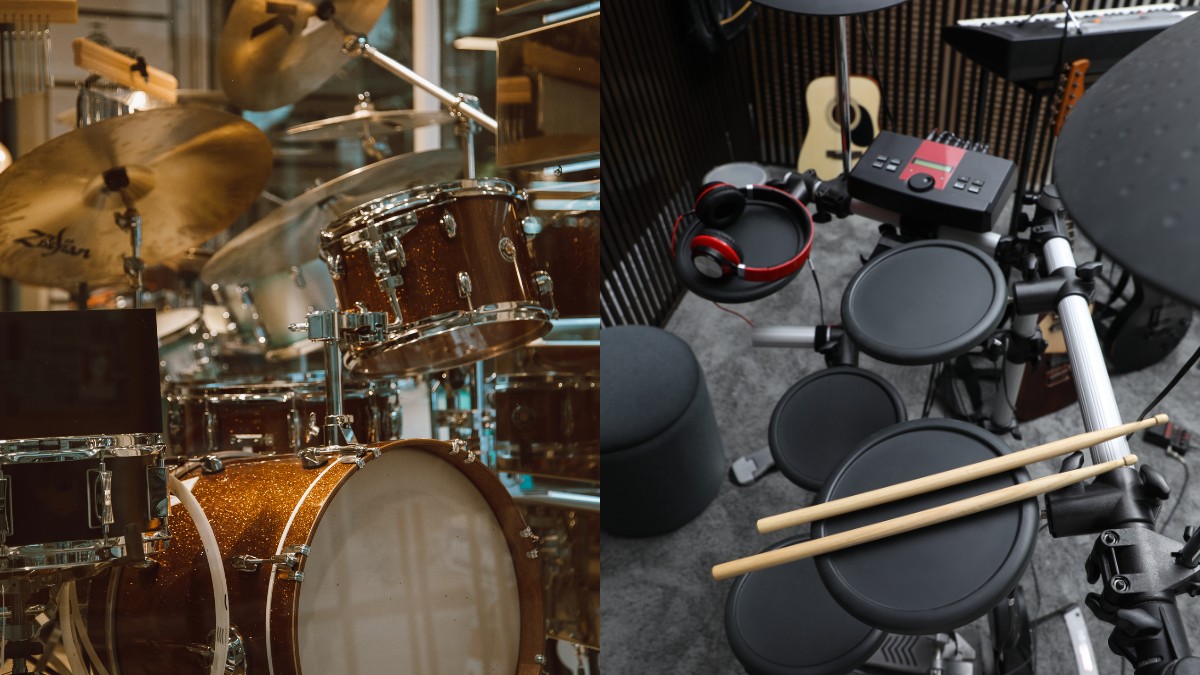7 Ways to Practice Drumming Without Drums

Practicing your drumming without a drum kit can be very beneficial, as it can give you many more opportunities to practice, while also making you focus on different aspects of your drumming. There are options like using a practice pad, air drumming, and other drills you can try.
It can be difficult for drummers to get time behind a full drum set. Perhaps you don’t have the space for it, your living situation doesn’t allow the noise, or you’re on the go and need a portable practice solution.
In this article, we’re going to go through 10 great ways that you can still practice playing drums without sitting behind your kit.
Contents
1. Use a Practice Pad
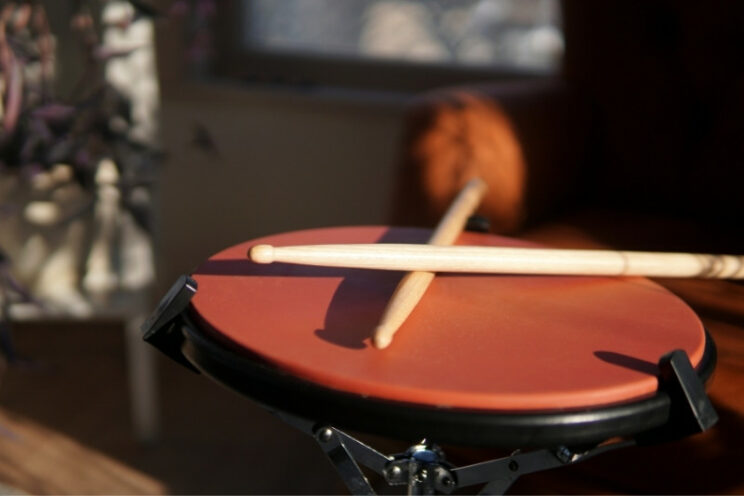
This is probably my most repeated point across this entire site! If you don’t own a practice pad, then get one straight away.
Practice pads are fantastic for developing your rudiments, sticking, and technique. For many drummers, quality time spent on your practice pad can even improve technique and sticking skills more than when sitting behind your drum set (Although you should never neglect your time behind the drum set whenever you can).
Why? It’s far easier to stay disciplined on your rudiments and technique when playing on a practice pad. It’s easier to hear the differences in bounces and you can sit upright next to a mirror and check your form.
A practice pad doesn’t completely simulate the feeling of playing on a real drum, they can be a lot bouncier. However, they’re still always my number one practice option when I’m not behind my kit.
2. Practice on a Pillow
Simply, hit your drumsticks off a pillow. I’m not a massive fan of this, but the idea has been repeated many times by drum instructors. Where the practice pad has an often bouncy feel to it, a pillow has no rebound. It makes you work harder and forces your joints and small muscles to strengthen.
Practicing on a pillow will often yield good improvements for playing on low-tuned drums such as floor toms.
Note: I would advise that you limit playing on a pillow to relatively short sessions. It’s easy to overwork your muscles and joints and cause issues such as tendonitis. Always listen to your body. If you feel like you’re in pain then stop and take some rest from those motions. If the pain won’t go away, preferably see a good drum instructor and a physical therapist (both if possible)!
3. Air Drum
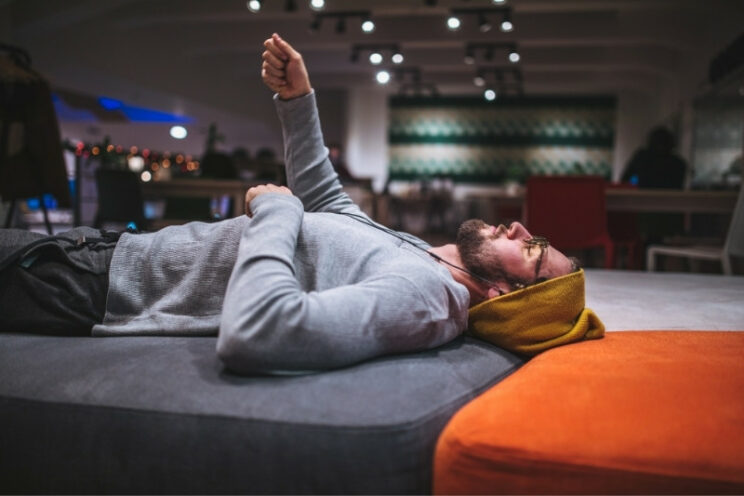
Joining different bands as a teenager, you might find yourself showing up to sessions relatively unprepared because you don’t have anywhere to practice on your drum set.
You can practice many songs by simply air drumming with your drum sticks. While keeping your drumsticks pretty loose, you can still get some good practice by doing this.
Let’s face it, we’ve all done it for fun one time or another. However, this would be to really practice and improve.
Why does it work? It helps to train your body on the movements. When you get onto a kit, your muscle memory will kick in and you should have a much easier time playing those beats.
You can air drum with or without your drumsticks.
4. Virtual Drumming – FreeDrum, AeroDrums, and others
Virtual air drumming has become more popular in recent years. Freedrum is an interesting device that attaches to your drumsticks and recognizes your movements. You can use them along with Android or iOS devices and listen to your drumming from there.
A similar option exists, known as Aerodrums. However this uses cameras, and you need a bit more equipment to use it.
Make sure to check the market for new virtual drumming options. This space has been innovating over the last few years.
5. Feet on the Floor
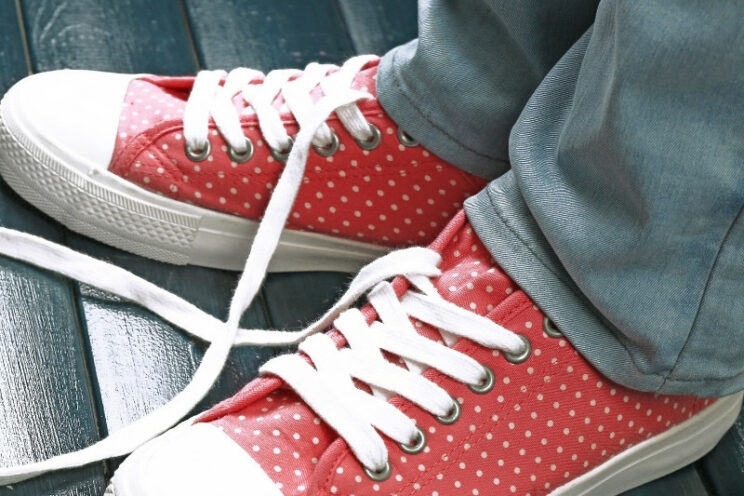
In drumming, coordination is everything. Nothing will make sense if your limbs are not coordinated. A good way to practice this is by tapping your feet and imagining your drum kit.
You probably already do this. Simply hit your feet against the floor and imagine you’re playing your drum pedals. This is another form of air drumming, and it can be quite effective to improve your coordination if you do it well.
You can do this when listening to songs, practicing drum beats, or working on your timing.
6. Practice Drum Sets, Electronic Drum Sets, and Low Volume Cymbals/Heads
If you can’t play acoustic drums because of noise concerns, you should consider both practice kits and e-drum sets.
The DW ‘Go Anywhere’ practice drum kit is a fantastic and compact option to work on your chops at low volume. You can also very easily move it to the side of the room when not needed.
Many electric drum sets are also very quiet and easy to practice on. Check out our guide on the best electronic drums sets for more information.
If you want to convert an acoustic drum set into a quiet one. You should also consider checking out low-volume cymbals and silent-stroke drum heads. This can bring the volume of your set down to conversational volume.
7. Metronome Drills
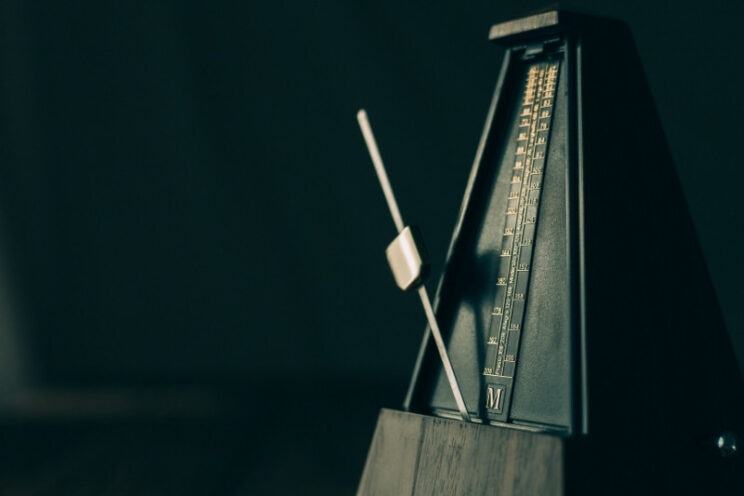
Metronomes should be a part of any drummer’s practice routines. You can run through metronome drills with rudiments using a practice pad, air drumming, pillow drumming, or any other way.
Simply take a difficult beat or rudiment and practice it at very low tempos and slowly increase it.
It can be much more difficult to practice drum beats very slowly. Why? It makes you have to work hard on getting the timing exactly right.
You can also turn the metronome on and off during your sessions to discipline yourself to stay on time.
Summary
Practicing your drumming at home has become an important part of the process. This allows you to get away from distractions and seriously work on your craft. It can be a struggle for many of us to find time and space to play a real set.
There are many ways to practice your drumming at home, even without a drum set. These include air drumming, foot-tapping, virtual drumming, coordination drills with a metronome, practice drums/drum sets, and practicing drum beats slowly.
Although the tips above can never replicate the real experience of playing drums, they can improve your skills for when we do get a chance to play on them.
Practice makes perfect. So start practicing your drumming at home, and soon you’ll be rocking out on stage!

